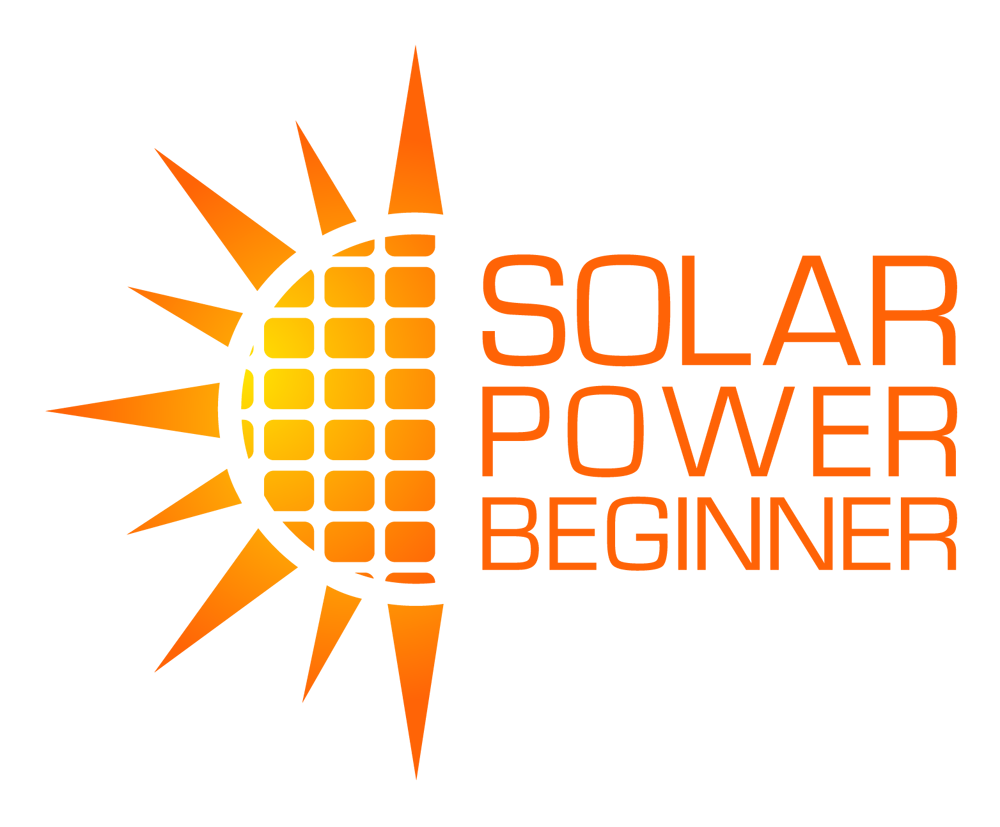Looking at a solar panel diagram can often be a great learning shortcut.
It can help you to understand how solar power works in a much more direct way than just hearing about it.
After all, you can only listen to an explanation of volts, watts, inverters, and solar cells so many times before it all starts to sound the same.
A solar panel picture can break the monotony and give your eyes a chance to look at what your ears are tired of hearing about.
So we’re going to give your ears a break by providing some relevant solar power diagrams that illustrate how solar power works. We start with a diagram of the solar cell and then proceed to diagrams of solar panels and solar arrays. We then provide a schematic of a solar power system that shows how to connect your solar panel, charge controller, and solar battery together.
Now let’s take a look at the humble (yet powerful!) solar cell that makes solar power possible.
Solar Cell Diagram
The solar cell is a fundamental element of solar power (and the building block of a solar panel). This cell is what actually turns sunlight into electricity. This simple solar cell parts diagram shows the pieces that work together to accomplish this amazing feat:
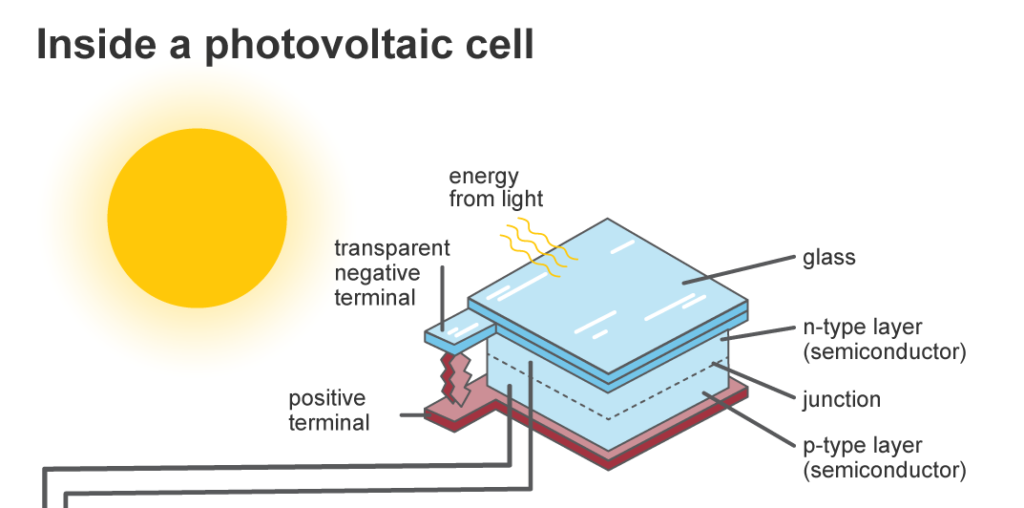
Here’s a brief breakdown of how a solar cell works:
- When the photons in sunlight strike the silicon in a solar cell, electrons are knocked loose
- These electrons cross the ‘p-n junction’ between the negative and positive layers of silicon
- Electrons are now able to be captured in the form of an electric current (but first, electrical conductors must be attached to the positive and negative sides of the solar cell)
Solar Panel Diagram
We learned that solar cells are the building blocks of a solar panel (also known as a ‘solar module’). Now let’s take a closer look at a solar panel parts diagram to see what a solar panel actually consists of:
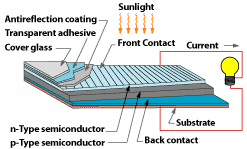
Here is another view of solar panel parts and how they fit together:
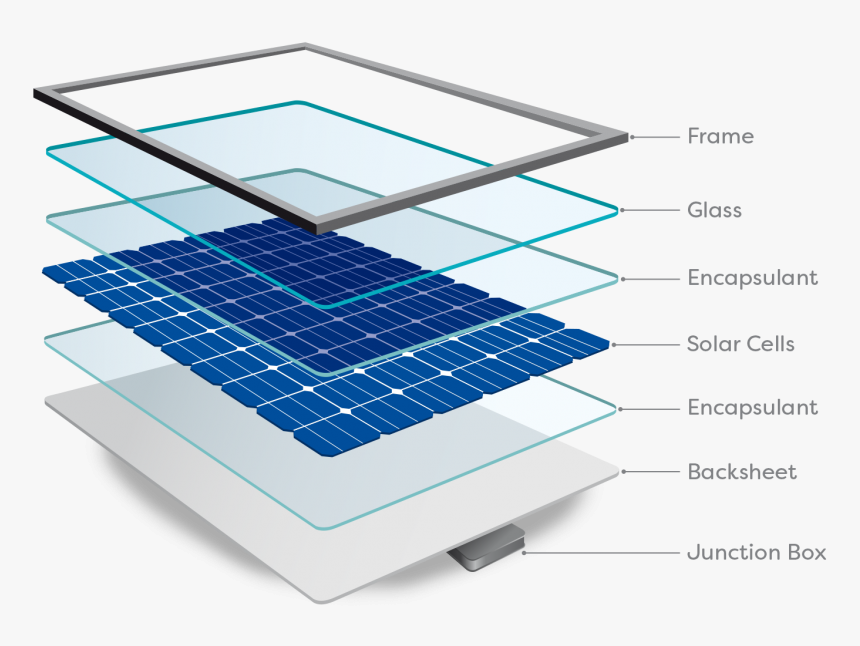
A solar panel brings many solar cells together so they can work as a team. The individual solar cells are connected (usually in series) to increase the power and voltage beyond what could be created by a single solar cell.
This is the simple version of how solar panels work:
- Sunlight strikes the solar cells within a solar panel
- Electrons in the silicon are knocked loose
- The electrons form an electric current
- The electric current flows to a conductive wire at the edge of the panel
- The electric current leaves the solar panel to do some actual electrical work
Solar Array Diagram
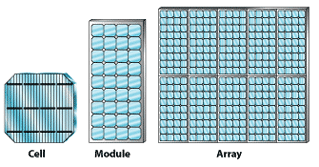
Multiple solar cells are connected together to make a solar panel. Multiple solar panels are connected together to create a solar array.
As we see in the following simplified version of a solar array, photons in sunlight knock electrons loose and cause them to move freely. The electrons are then forced to flow in a certain direction, creating a current which can be used to power an external device.
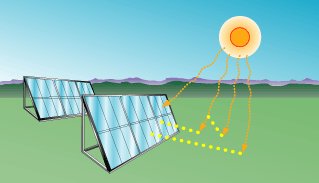
Solar Power System Diagram
When we have enough solar cells for a solar panel, and enough solar panels for a solar array, we are ready to create a full solar power system.
The following is a diagram of a residential grid connected solar system:
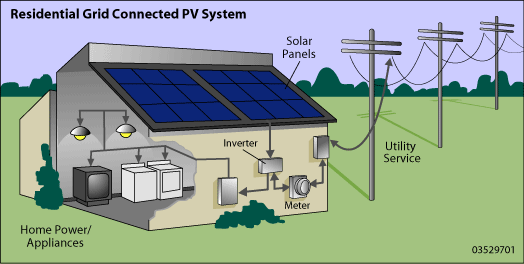
As we can see from this solar power diagram, however, we need more than just solar panels to complete a full solar power system installation. The following items are also required:
- A Solar Power Inverter
- This is the device that takes DC power from your solar panels and turns it into AC power that can be used by your home appliances.
- An Electric Meter
- This allows ‘net metering’ to take place. In a net metering situation, people are able to sell back to their utility company the excess electricity produced by their solar panel installation.
Solar Panel Wiring Diagram
The best way to prepare for any solar power project is to create a solar panel wiring diagram. It is a great way to think through your plan and make sure you’re ready for any potential issues.
Below is an example of a basic solar panel system diagram.
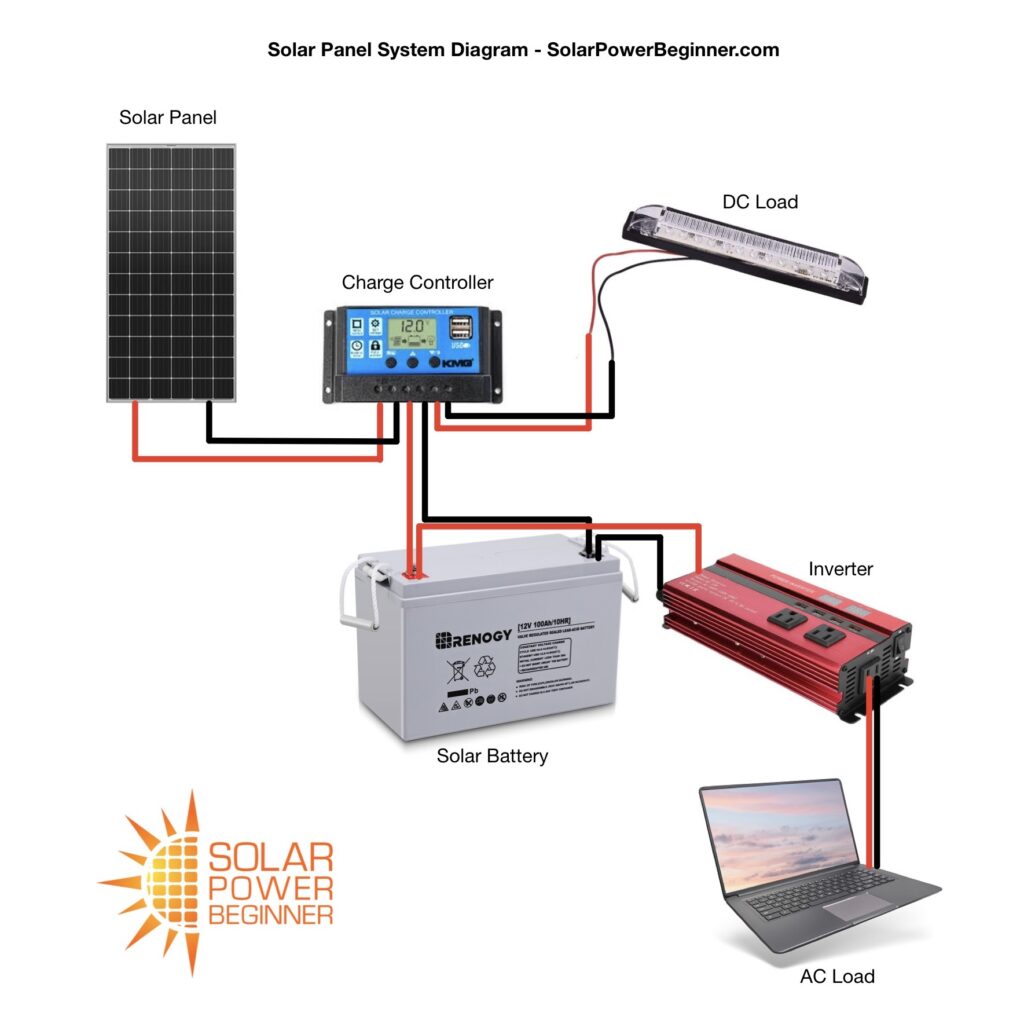
These are the different elements featured in the solar energy diagram:
- Solar Panel
- This is obviously an important part of your solar power system. The solar panel absorbs the light of the sun and converts it into DC electricity
- Charge Controller
- The charge controller is the brain of your solar system. It makes sure your battery isn’t overcharged and prevents battery drainage by shutting down your system when necessary.
- Solar Battery
- Your solar batteries store the power that your solar panel produces. These deep cycle batteries are designed to be regularly deeply discharged.
- Inverter
- An inverter will convert the direct current (DC) electricity that your solar panel produces into alternating current (AC) electricity. This is important because most of your household appliances and gadgets will require AC electricity.
- AC Load
- As we mentioned, most appliances and gadgets require AC electricity and would be considered an AC load when being powered by your system.
- DC Load
- DC appliances and gadgets do exist but they are not the norm. If you have a DC fridge or light or other device and power it with your system it is a DC load.
Hopefully you have found that a solar panel diagram provides you with a better understanding of solar power and how it works. We find that a picture really is worth a thousand words!
